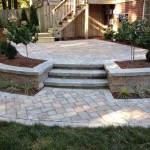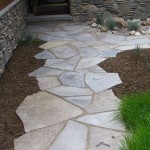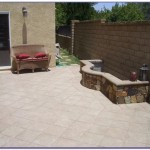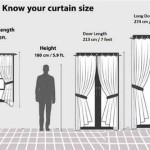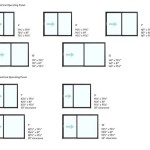How to Build a Patio Table Out of Wood
A patio table is a quintessential addition to any outdoor living space, providing a gathering spot for meals, socializing, and enjoying the fresh air. Building your own patio table from wood offers a rewarding and customizable project, allowing you to craft a piece that perfectly complements your patio's aesthetic and your personal style. This article will guide you through the steps of building a sturdy and attractive patio table using readily available materials and tools.
1. Materials and Tools
Before embarking on your patio table construction journey, it's essential to gather the necessary materials and tools. The specific materials will depend on the desired size and design of your table, but here's a general list:
- Lumber: Select high-quality, weather-resistant lumber such as redwood, cedar, or treated pine. For the table top, consider using thicker planks for greater durability.
- Wood screws: Choose screws long enough to penetrate through the wood and into the supporting structures.
- Wood glue: Use a high-quality wood glue for robust and long-lasting joints.
- Finishing materials: Opt for a weather-resistant wood finish, such as stain or paint, to protect the table from the elements.
- Safety equipment: Always prioritize safety with eye protection, gloves, and hearing protection.
The essential tools include:
- Saw: A circular saw or table saw is ideal for cutting wood.
- Drill: A cordless drill with various drill bits is necessary for drilling pilot holes and driving screws.
- Measuring tape: Accurate measurements are crucial for precise cuts and assembly.
- Level: Ensure the table is level and stable.
- Clamps: Securely hold wood pieces together during assembly.
- Sandpaper: Smooth surfaces and edges for a refined finish.
2. Design and Planning
The first step in building a patio table is to carefully plan your design, considering the desired size, shape, and features. Sketch out your table on paper, noting dimensions, materials, and any unique elements. There are numerous design options available, ranging from simple rectangular tables to more elaborate designs with intricate carvings.
Some key design considerations include:
- Size: Determine the appropriate length, width, and height for your table to accommodate seating and accommodate your patio space.
- Shape: Choose a shape that complements your patio's style, such as a rectangular, square, round, or oval table.
- Legs: Select a leg design that suits your aesthetic preferences, such as straight legs, tapered legs, or decorative legs.
- Tabletop construction: You can create a simple tabletop using individual planks, or opt for more intricate designs using a single piece of plywood or a composite table top.
- Additional features: Consider adding embellishments such as a built-in umbrella hole, storage shelves, or decorative trim.
3. Cutting the Wood
Once you have finalized your design and materials, it's time to cut the wood to size. Carefully measure and mark each piece of lumber, ensuring accuracy to avoid discrepancies in the final assembly. Use a saw to cut the wood according to your measurements, making smooth, precise cuts for a professional finish.
During this stage, it's important to consider the following:
- Safety: Always prioritize safety by wearing appropriate eye protection and using a saw guide for straight cuts.
- Joints: For strong and stable joints, consider using mortise-and-tenon joints or pocket holes.
- Tabletop construction: If you are using individual planks for the tabletop, ensure they are properly aligned and secured with wood glue and screws.
4. Assembling the Table
With all the wood pieces cut to the desired size, it's time to assemble the table. Start by assembling the legs and then attach the apron, which is the frame that supports the tabletop. Use wood glue and screws to secure the joints, ensuring they are strong and stable.
Remember to:
- Pre-drill pilot holes: This prevents wood from splitting during screw insertion.
- Use clamps: Securely clamp the pieces together while driving in the screws for a tight and even join.
- Check for squareness: Regularly check the table for squareness using a carpenter's square to ensure the final structure is balanced and sturdy.
5. Finishing and Refinement
Once the table is assembled, it's time to refine and finish it to your desired aesthetic. Start by sanding the entire surface, paying particular attention to any rough edges or imperfections. Sand the table with progressively finer grit sandpaper, starting with a coarse grit to remove any major blemishes and ending with a fine grit for a smooth finish.
The final stage involves applying a protective finish to the table. You have several options, including:
- Stain: Stain enhances the natural beauty of the wood while providing a protective finish.
- Paint: Paint offers a wider range of color options and can create a bold and modern look.
- Sealant: A sealant provides a waterproof barrier, protecting the wood from moisture and UV damage.
Apply the chosen finish according to the manufacturer's instructions, ensuring even coverage and adequate drying time.
With your patio table built, sanded, and finished, you are ready to enjoy its beauty and functionality for years to come. Whether hosting a casual gathering or enjoying a solitary cup of coffee, your personalized patio table will be a central hub for all your outdoor activities.

Diy Outdoor Table Angela Marie Made
:max_bytes(150000):strip_icc()/cherishedbliss-2fe16e06a68b44589c6631e6b39ae68f.jpg?strip=all)
18 Diy Outdoor Table Plans

Diy Outdoor Table Angela Marie Made

How To Diy An Outdoor Farmhouse Patio Table

Outdoor Dining Table Kreg Tool

Diy Outdoor Dining Table Restoration Hardware Dupe Thrifty Pineapple

Outdoor Dining Table Kreg Tool

Easy Diy Outdoor Coffee Table Build
:max_bytes(150000):strip_icc()/remodelaholic-b957b7f134eb4281be2bcb3dee084626.jpg?strip=all)
18 Diy Outdoor Table Plans

How To Build An Outdoor Table Addicted 2 Diy
Related Posts

